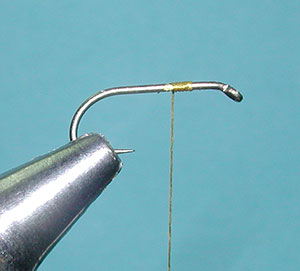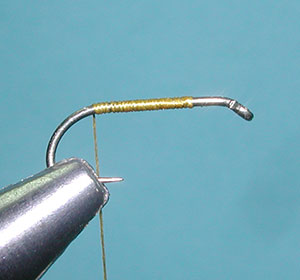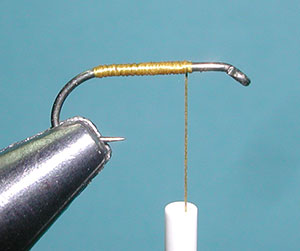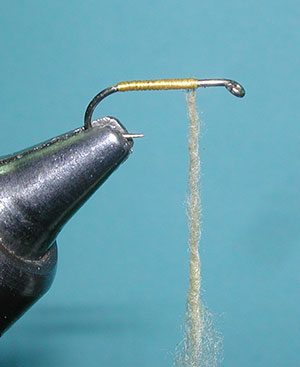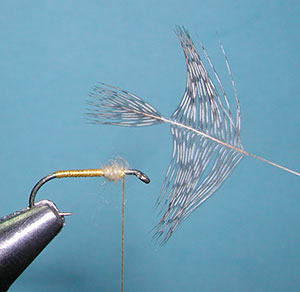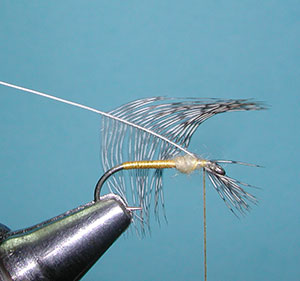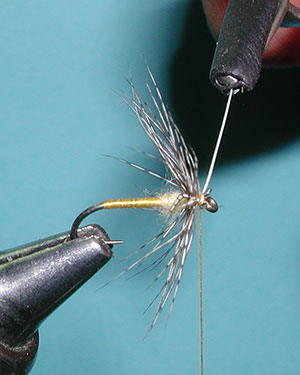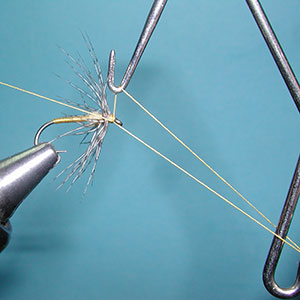Floss Bodied Soft Hackles – the rebirth of a old favorite
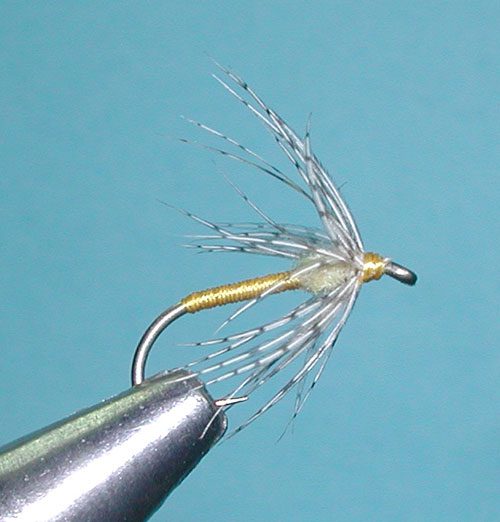
Partridge & Yellow
Tying Instructions
| Materials
to Order Material, click the link |
|
|---|---|
| Hook | TMC 2529 #10-18 |
| Thread | Yellow Silk Thread |
| Body | Yellow Silk Thread |
| Thorax | Pale Yellow Superfine |
| Hackle | Gray Partridge Hackle |
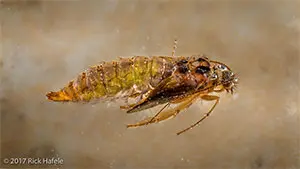
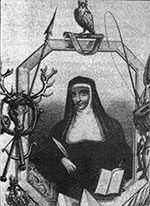
Dame Juliana Berners
Floss Bodied Soft Hackles
Floss Bodied Soft Hackles are some of the oldest fly patterns originating in Great Britain. Dame Juliana Berners wrote about the Partridge & Orange in 1496,Treatise of Fishing with an Angle.The floss bodied soft hackle patterns were also known as Yorkshire Spiders and North Country flies since many of these patterns were developed in Northern England and Scotland.
Silk Thread
Sylvester Nemes brought interest in the pattern to the United States in 1975 with his book,The Soft Hackled Fly. The floss recommended by Nemes was Pearsall’s Gossamer Silk Thread. This thread had been around since the early 1900’s and had been “the” silk thread to create the floss bodies. Pearsall discontinued making silk threads in 2012. Other silk threads are available. Ephemera Silk thread is often suggested, some consider it an upgrade from Pearsall. Ephemera Silk thread has been around for over 180 years, manufactured in France. Why silk thread?? The silk thread has a translucency when wet that cannot be replicated by rayon or nylon floss materials. It gives the soft hackle a depth to the body similar to an actual caddis emerger or mayfly.
Match the Hatch
ThePartridge & Yellowis one of the best-known soft hackles. It is an excellent choice for Sulphur or yellowish mayfly hatches. Swing the pattern to the edge of the stream as this is where many of the mayflies are emerging. ThePartridge & Orangeis another soft hackle with a distinguished history. T.E. Pritt described this pattern in 1895 in his book,Yorkshire Trout Flies. Like the Partridge & Yellow, the Partridge & Orange imitates emerging caddis pupa, diving adult caddis or sunken may fly spinners. The movement of the hackle is the keynote of this pattern. It needs to be free to oscillate within the water, so do not overwrap the hackles or restrict the hackles with thread wraps. By only having a couple of wraps, the pattern allows light to pass through to the body giving it an illusion of life.
Many patterns use Hungarian Partridge for a hackle but Ruffed Grouse is another gamebird hackle that can be used on any of these soft hackle patterns. It has a pleasing orange and black mottled coloration and flows much like the partridge. You will have the best selection by purchasing the entire gamebird skin to have a wide range of hackle sizes.
Unique Pinkish Dubbing
TheTups Indispensibleis an old pattern from England with an interesting history. The pattern goes back to 1890 where Mr. R.S. Austin, a tobacconist in Devon, South West England, also tied and sold fishing flies. He had a quite successful pattern that had a unique pinkish dubbing and that pattern was brought to the attention of G.E.M. Skues, the father of modern nymph fishing. Mr. Skues tested the pattern on his local water the River Ichen and was impressed with the effectiveness of the pattern, particularly the thorax dubbing.
Skues added some crimson seal fur to the dubbing and worked out a name for the fly with Mr Austen. They called it the Tups Indispensible. “Indispensible” since it should never be left out of your fly box. The term “Tups” refers to a Ram that is used for breeding. Sheep farmers would apply dye to the underside of the Ram and would inspect their females the next morning for stained backs. This would be referred to as being “tupped” by the Ram.
It happened that Mr Austen would collect the hair from the same location that this dye was applied to the Ram. It would have a little urine mixed with it but the hair was very soft and yellowish in that particular area. Adding some combed dog hair from his lemon yellow spaniel, some cream seals fur, and some crimson seal hair, Austen had a dubbing recipe that he kept to himself until his death. Now, you know the rest of the story….
Variations
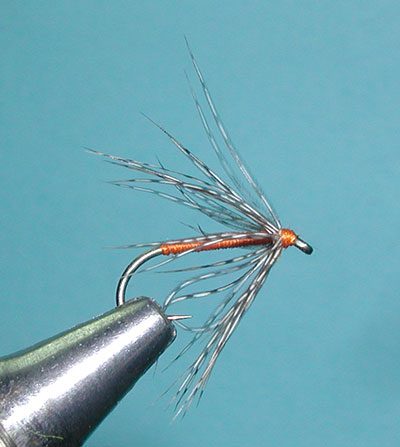
Partridge & Orange
| Hook | TMC 3761 #10-18 |
| Thread | Orange Silk Thread |
| Body | Orange Silk Thread |
| Hackle | Brown Partridge Hackle |
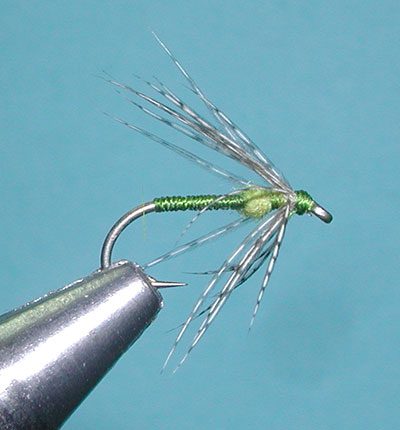
Partridge & Green
| Hook | TMC 3761 #10-18 |
| Thread | Green Silk Thread |
| Body | Green Silk Thread |
| Thorax | Caddis Green Superfine |
| Hackle | Gray Partridge Hackle |
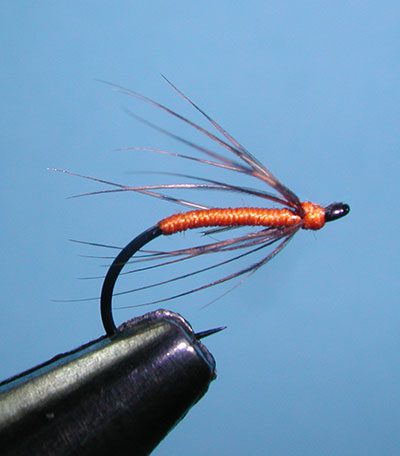
Grouse & Orange
| Hook | TMC 206BL #10-18 |
| Thread | Orange Silk Thread |
| Body | Orange Silk Thread |
| Hackle | Black and Orange Grouse Hackle |
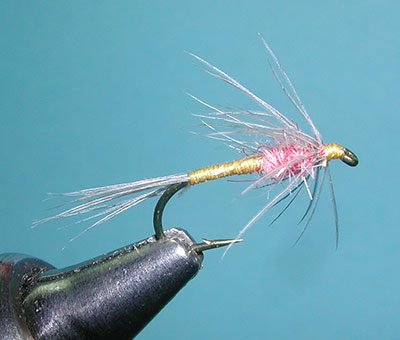
Tups Indispensable
| Hook | TMC 9300 #10-18 |
| Thread | Yellow Silk Thread |
| Body | Yellow Silk Thread |
| Thorax | Pink Shrimp Hare-tron Dubbing |
| Hackle | Light Dun Hen Hackle |
| Tail | Light Dun Hen Hackle |

